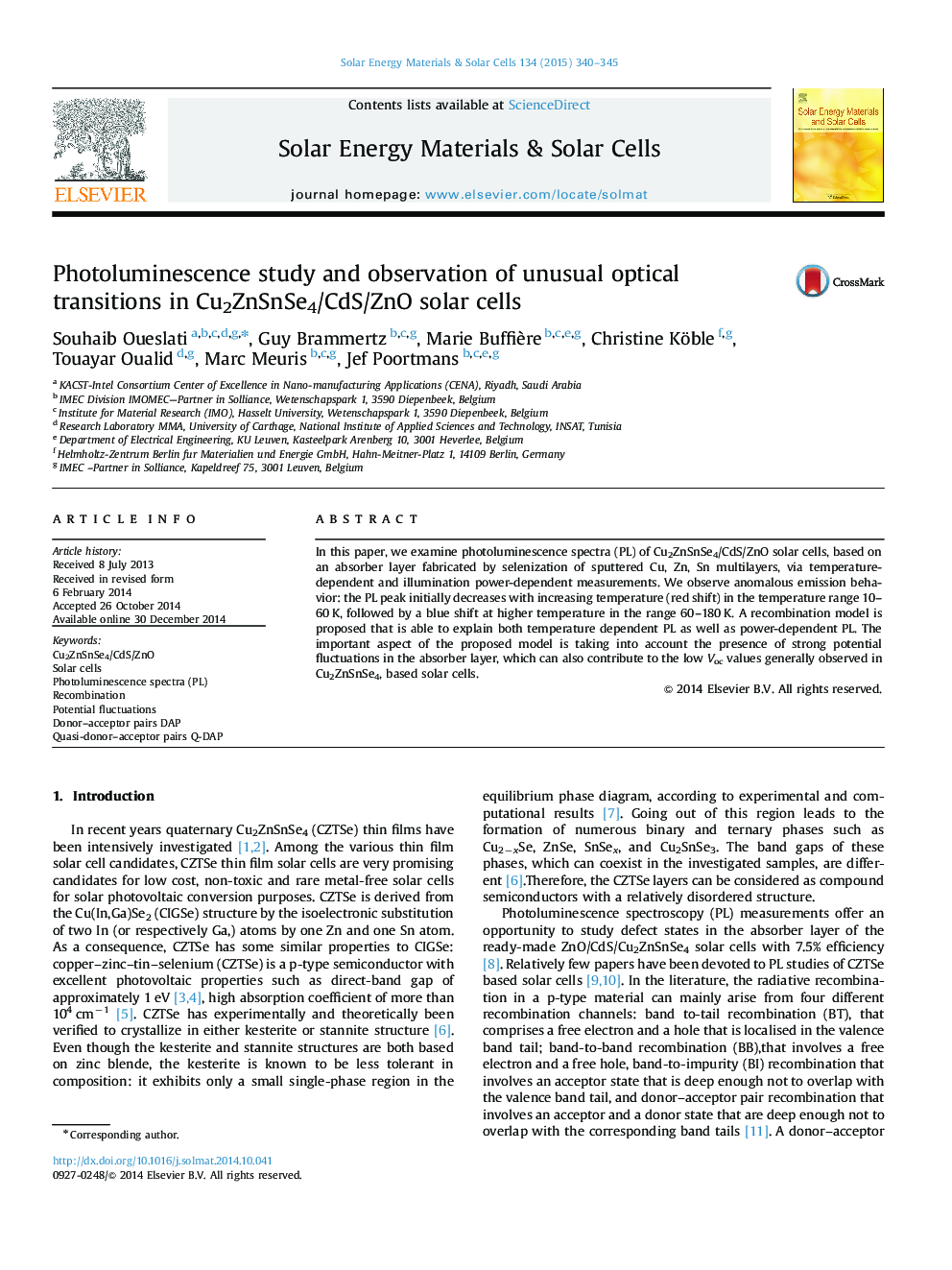| Article ID | Journal | Published Year | Pages | File Type |
|---|---|---|---|---|
| 77926 | Solar Energy Materials and Solar Cells | 2015 | 6 Pages |
•A comprehensive recombination model is proposed to explain the photoluminescence spectra of CZTSe solar cells.•We observe anomalous emission behavior due to the presence of strong potential fluctuations in the material.•The low Voc values in CZTSe solar cells can be linked to the presence of the potential fluctuations in the material.
In this paper, we examine photoluminescence spectra (PL) of Cu2ZnSnSe4/CdS/ZnO solar cells, based on an absorber layer fabricated by selenization of sputtered Cu, Zn, Sn multilayers, via temperature-dependent and illumination power-dependent measurements. We observe anomalous emission behavior: the PL peak initially decreases with increasing temperature (red shift) in the temperature range 10–60 K, followed by a blue shift at higher temperature in the range 60–180 K. A recombination model is proposed that is able to explain both temperature dependent PL as well as power-dependent PL. The important aspect of the proposed model is taking into account the presence of strong potential fluctuations in the absorber layer, which can also contribute to the low Voc values generally observed in Cu2ZnSnSe4, based solar cells.
